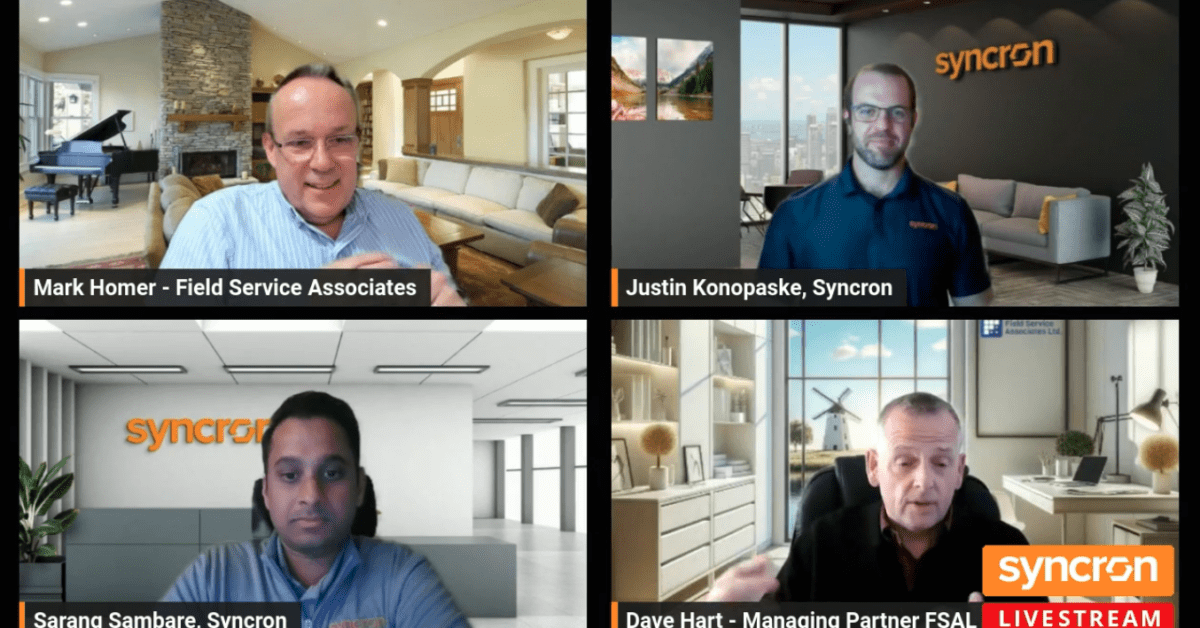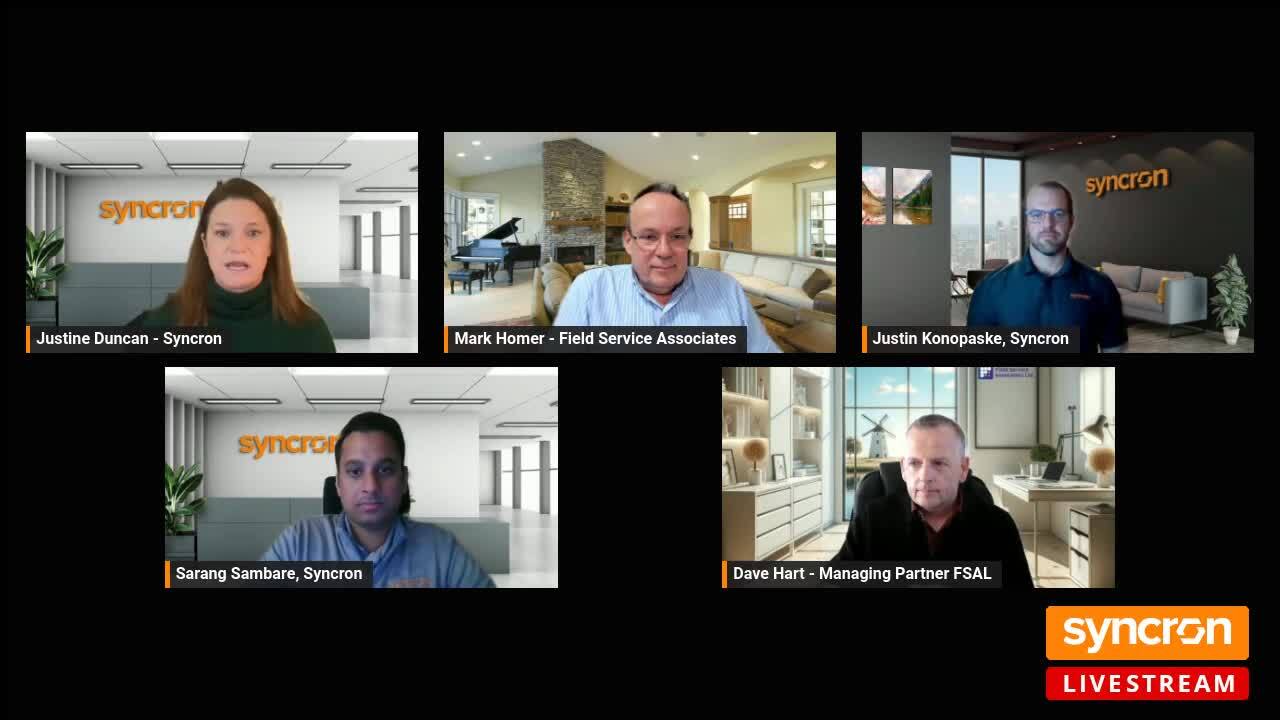
Dave Hart and Mark Homer, managing partners of Field Service Associates, Ltd., sat down with industry experts Sarang Sambare and Justin Konopaske to explore what happens when surprises occur in the service industry, how these surprises affect customers, and how service organizations can mitigate these surprises to optimize aftermarket services.
Here are some of the main takeaways from their discussion, which is available on demand.
Service surprises tend to snowball
When things go wrong in servitization, the situation tends to escalate and grow more severe over time. Sambare recalled a scenario where a large OEM had a film production server go down, and a job that should have cost $1,000 in parts and labor ended up turning into a multi-million dollar work order because it resulted in a delay to the movie release date.
Of course, this is an extreme case, but service organizations have an obligation to their customers to deliver as smooth of an experience as possible. Konopaske underscored this point by relating it to the aviation industry: “Aviation service surprises cast a wider net than most people anticipate because of the complex web that is a flight operations network on any given day.” Aircraft issues often cascade downstream—resulting in lengthy delays and travel disruptions.
Service leaders must take a proactive approach—anticipating potential disruptions they might face and developing systems that prevent the cascading impact service surprises can have.
Customer expectations are evolving
Although many service organizations have made significant technological improvements over the past several years, customer expectations are evolving. Konopaske pointed out that there’s no question about whether maintenance is required on complex assets—the question is how to eliminate as much unplanned downtime as possible. And if there is downtime, how can service organizations work to resolve it as quickly as possible? Shrinking time-to-repair due to technological advancements is becoming the customer expectation, so time-to-repair is what service organizations must adjust for.
When it comes to entitlements, customers don’t want to make any unexpected payments. For instance, if you take your car in for planned maintenance and find out a part is unavailable, the cost is unknown, and your vehicle won’t be returned until later than expected, the planned visit turns into a surprise. Service surprises lead to poor customer experiences due to a lack of planning and transparency.
“No one wants to be hoodwinked, and no one wants false hope,” said Hart. “Customers are far more informed and empowered than they’ve ever been. They can look at portals and track where their technician is. So build credibility by telling them the truth. Don’t give them false hope.”
Communication and transparency are key
When service surprises like unplanned downtime are eliminated or mitigated, the service organization must communicate this to demonstrate value to the customer. “When things are going well, you must communicate that,” said Homer. “It’s all about communication and articulating the value.”
Hart underscored this by pointing out the need for education if customers don’t see perceived value. By explaining that a complex asset was monitored remotely and that the service organization worked proactively to resolve the issue before any downtime occurred, customers can start to make the connection to value in their service contracts.
Pick a starting point and move north
Konopaske points out three categories where technology can have the biggest impact in eliminating service surprises: parts planning, pricing, and entitlements. But rather than making sweeping changes to the entire IT infrastructure, they want tools that complement their current system. Instead of undergoing a complete overhaul, consider a more modular approach.
Konopaske suggests picking an aspect of your business to take that first step and start moving in that direction. You don’t need a multi-year plan with every detail finalized. Have an outline of where you’re going, learn along the way, and ultimately you’ll add incremental value to your business.
Access the full LinkedIn Live here for more insights on how service organizations can mitigate disruptions and eliminate service surprises.
